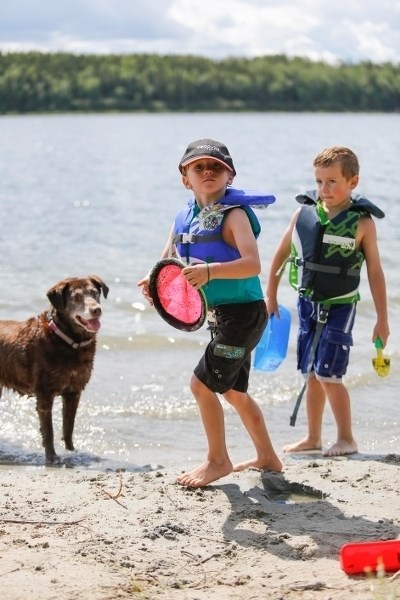Skeleton Lake joined the long list of Alberta lakes with a blue-green algae problem last week.
“It's warm,” said Dr. Gerhard Benadé, a medical officer with Alberta Health Services (AHS). “There has not been a lot of rain so the water levels are dropping, and in a lake that is relatively shallow, these conditions make it easier for the water bodies to warm up and create conditions under which the algae can multiply.”
Blue-green algae is a type of bacteria that naturally occurs in most water bodies, but in certain conditions, they can multiply and change colour.
“They're noticeable usually because their colour changes in a green, blue, sometimes grey or pinkish,” he explained.
This colour change is what notifies AHS as to when to alert people on the lake. Sometimes residents or visitors to the area report the changes and other times, a member of Environmental Public Health investigates – this is primarily in heavy use lakes.
The bloom usually happens later on in the summer in shallower lakes or where there’s nutrients running off into the water – like in a lake with agricultural land around it. The algae, themselves, aren’t dangerous, but sometimes the bacteria releases a toxin.
“If (people) were to swim in it, it could irritate their skin; if they were to swallow it, it could upset their stomach, irritate their eyes and so forth,” Benadé said. “Individuals who may consume a lot of it over a long period of time could have adverse health effects on their liver and so on.”
Similar problems will occur in pets and livestock.
The bacteria doesn’t always release the toxin, but it’s impossible to know whether it has been released. So, to be safe, it’s better to just stay out of the water when the algae starts to change colour.
“It's important for people to take basic common sense precautions,” said Benadé. “You shouldn't be swimming in discoloured water anyway. It doesn't make any sense.”
People should also stay away from eating a whole fish or any fish trimmings from the lake – although fish fillets are fine. Pets shouldn’t have any of the fish at all. Furthermore, boiling water doesn’t kill the toxin.
“You shouldn't consume it even after boiling. Rather, avoid it.
“But being on the beach itself is safe. Just don't go into the water. You know, enjoy what's left of summer,” he said.



